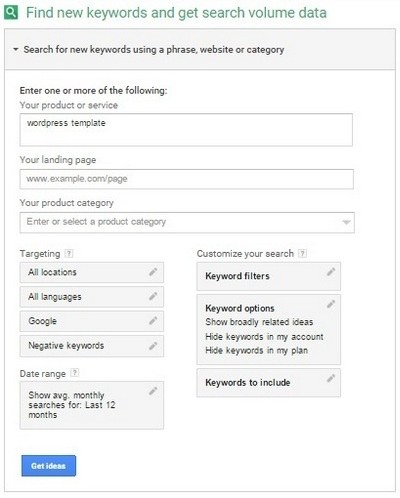Long-tail keywords can help even smaller and newer websites to "steal" traffic away from the big and established players. All it takes is some intelligent keyword research and content creation.
So here's a lowdown on the what, why, and how of long-tail keywords.
What
Keyword phrases that typically contain 3-4 or more words are known as long-tail keywords. They tend to show a more specific search intent on the part of the searcher, narrowing down the results to only the most appropriate.
These keywords are less general than 1-2-word keywords (AKA "seed" or "head" keywords) and have lower search frequency (i.e., they are used less in searches). The resulting traffic from these long-tail search terms is therefore relatively less than for general keywords, but that traffic is more targeted, with much higher chances of conversion.
Here's an example of a head keyword and longer-tail keywords/phrases:
- Reebok shoes
- Reebok black running shoes
- Reebok black marathon running shoes cost
The intention of the first keyword isn't clear: A searcher might want to simply check out the official website of Reebok. However, the third, a long-tail keyphrase, displays a more specific search intent—and quite possibly an intent to buy.
Why
The logical advantages behind targeting long-tail keywords are clear:
- They are much easier to rank for than the more general terms relating to your industry.
- They provide far more targeted traffic that has a better chance of converting.
- They give you an opportunity to steal traffic away from the mammoth, established websites that rule the roost for all the general, high search-frequency terms in your industry.
Search terms can be divided into informational and commercial. Technically, they can be of many more types, but let's just go with these two broad categories for now:

The first column includes a list of terms that users search to, more often than not, simply gain information without making any commercial transaction; the second displays a "more commercial bent of mind," with a very likely intention to purchase.
While doing keyword research (as explained in the next section), you will come across both types.
Although ranking for informational keywords is fine, and helps to develop and establish your subject-matter authority, the commercial keywords are where the money is. So, depending on your industry and your target audience, make a judicious choice, possibly targeting a mix of both.
Another factor generally held to be true is that when using PPC advertising, long tail keywords are less expensive. Though that may not always be the case, very often it is. So consider the cost vs. the return when planning your PPC campaign.
Keep in mind that drawing attention to and repeatedly bidding on a particular long-tail term may eventually make it more popular and increase the bid price in the long run.
How
The first step is keyword research. Figuring out the most appropriate long-tail keywords to target will be the very foundation of your marketing efforts.
There are several ways to go about that research.
Google Suggest
Check your Google Analytics to see what keywords are sending traffic your way. Make a list of those specific phrases and then type them into the Google search box.
Google Suggest will show up a list of suggested search terms based on other users' searches. Use those to figure out what long-tail forms of your head keywords you can employ in your marketing strategies.

Google Related Keywords
Search for your head keyword and then check the related searches section at the bottom of your Google search results page.
The list of key phrases there, again based on other users' search frequencies and including synonyms, should give you plenty of ideas for long-tail keywords worth targeting.

Google Keyword Planner
Start with your seed or head keyword, the one primarily relevant to your industry. Proceed to Google Keyword Planner, enter your seed or head keyword, and click on Get ideas. Then click on the Keyword Ideas tab to check out the suggested keywords as per your head keyword.
Find a list of relevant similar key phrases related to your seed term with additional search frequency and competition data. Pick and choose the ones that suit your website or business.

Other Useful Tools
- 7search: A great free tool to fine-tune your long-tail keyword research. Includes searches and PPC bids.
- HitTail: This one isn't free, but if you're a blogger who is willing to publish a review about HitTail, you could get a year's Pro Plan subscription free.
- Ubersuggest: This one's free and extremely handy with an alphabetically sorted, extensive list.
- KeywordTool.io: The free version does not provide Search Volume, CPC, and AdWords Competition data, but it is nonetheless useful for getting keyword ideas.
Next Step
Now create content to incorporate the keywords you've decided on. Use them in titles, bullet points, headings, and in body text, but do not overdo it. Keyword stuffing can be counterproductive, causing more harm than good. Keep the keyword frequency below 1%.
Frame your content to include the key phrases seamlessly without looking forced, so as not to compromise on reader experience. Think about what useful information the reader would be intending to find, then provide that and more.
Proceed to share those Web pages across social media channels.
What Not to Do
- Don't get greedy and stuff keywords on a page.
- Don't use long-tail keywords verbatim in your content if they don't make grammatical sense (e.g., "cheap plumber repairman Cleveland Ohio").
- Don't compromise on user experience.
- Don't neglect synonyms. Use them to avoid keyword stuffing and improve rankings.
- Don't get obsessed with rankings and so go on to indulge in questionable practices.
- Don't let Google algorithm updates worry you. If you create content with user experience in mind, you will come out on top.




